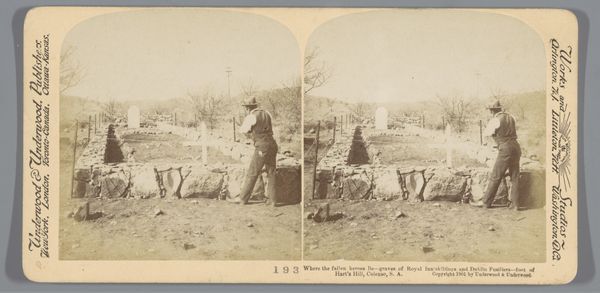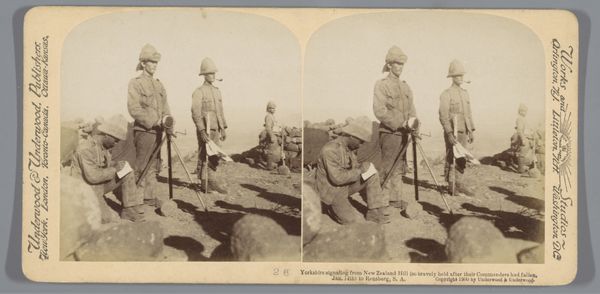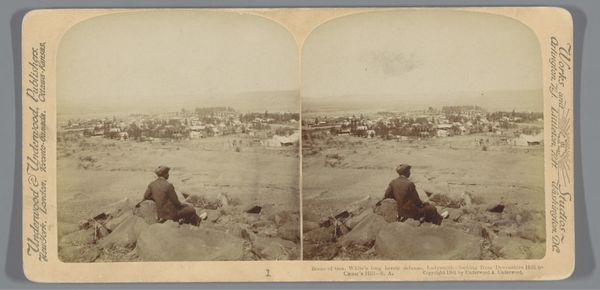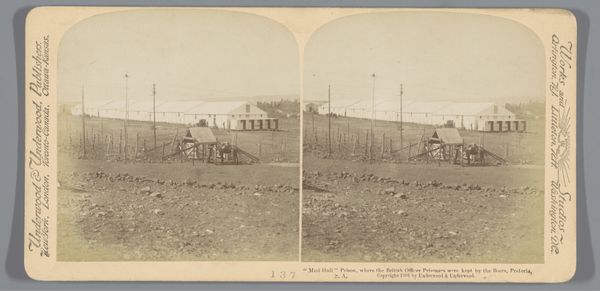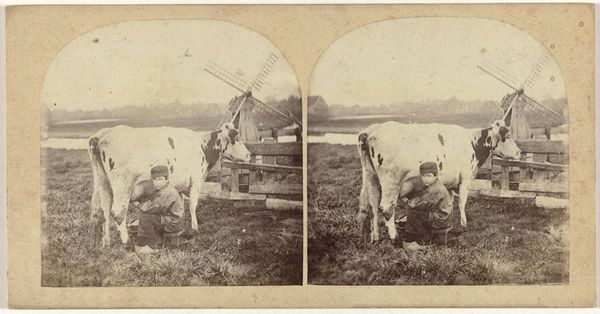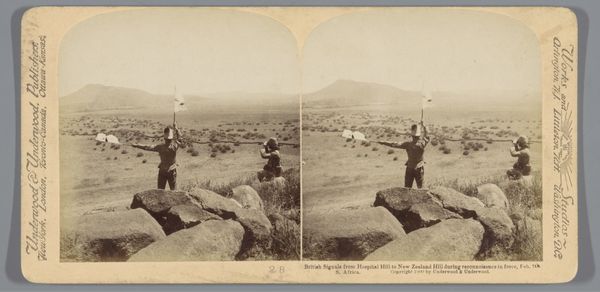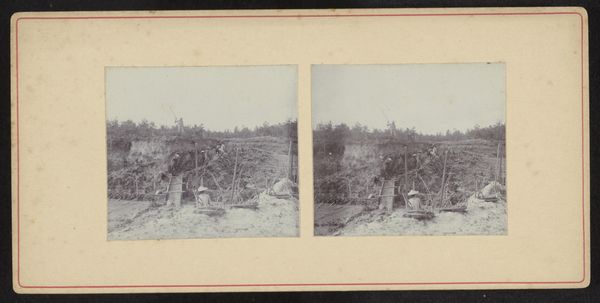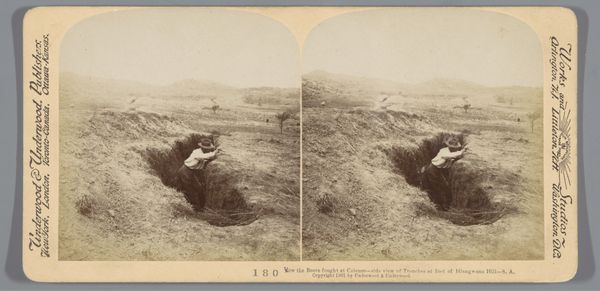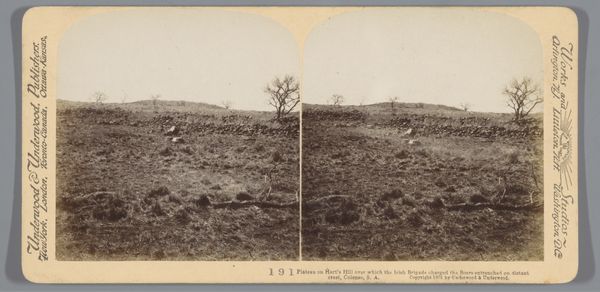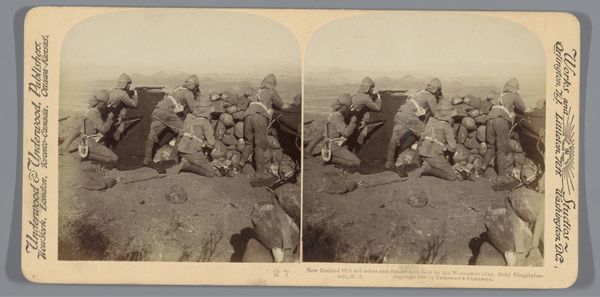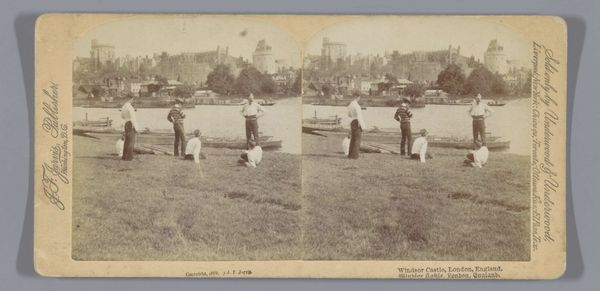
Twee Britse soldaten met heliografen bij het fort op Constitution Hill in Johannesburg 1901
0:00
0:00
photography, gelatin-silver-print
#
portrait
#
photography
#
gelatin-silver-print
#
realism
Dimensions: height 88 mm, width 178 mm
Copyright: Rijks Museum: Open Domain
Curator: This gelatin silver print from 1901, titled "Two British Soldiers with Heliographs at the Fort on Constitution Hill in Johannesburg," really speaks to the intersection of technology and colonialism. Editor: It’s interesting, this stereo image makes the scene appear quite barren, almost as if the landscape itself is being surveyed and subdued along with the city. What stands out to you about it? Curator: The very materiality of the image—the gelatin silver print, a mass-produced photographic format—is telling. It suggests how visual information became a commodity used to further colonial interests and shape public opinion. Consider the heliograph itself. It’s not just a neutral tool for communication, but an instrument born of military necessity and refined through colonial application. How do you think the representation of these tools is designed to shape popular conceptions about colonialism? Editor: I see your point. It does appear almost staged; as though they want to highlight this technology’s contribution to civilization or empire building. In viewing this image of technological ingenuity juxtaposed with the landscape and suggestion of a defeated population – you wonder what stories are purposely not being included? Curator: Precisely. The presence and the tools depicted underscore not only British advancement but the tangible impact on a taken-over terrain and culture. What happens when such technology is mass-produced to visually document this, thereby solidifying biased accounts for generations? Editor: Right, the widespread consumption of such images also served to normalize imperial authority. It becomes so integrated in visual language it’s challenging to consider the impact of material and its implications, past or present. Curator: Yes, these pieces offer multiple layers and perspectives into process, historical setting and cultural viewpoints! Editor: I’ll be thinking about that contrast between representation and lived experience for a while. Thanks!
Comments
No comments
Be the first to comment and join the conversation on the ultimate creative platform.

